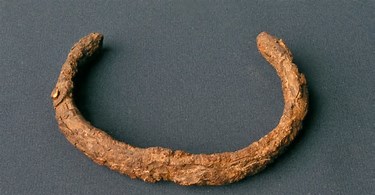Researchers have found that an ancient civilization not only had skilled artisans but also knew about metals that came from outer space. This discovery comes from the Treasure of Villena, a collection of golden artifacts, where two corroded objects may be the most extraordinary finds.
New research suggests these two pieces were made from meteoric iron—iron from celestial bodies that fell to Earth over 3,000 years ago—rather than terrestrial iron ore.
The Treasure of Villena, found in Spain in 1963, consists of 66 ornate gold objects and is one of Europe’s finest examples of Bronze Age goldsmithing. However, two artifacts stood out: a dull bracelet and a rusted hollow hemisphere with gold decorations. Their iron-like appearance was different from the rest of the gold collection.
Salvador Rovira-Llorens, former head of conservation at Spain’s National Archaeological Museum and lead author of a recent study, explained that these two objects made it difficult to determine the age of the collection. In the Iberian Peninsula, the Iron Age began around 850 BCE, but the gold artifacts date back to 1500-1200 BCE.
The researchers realized that the answer might lie in meteoric iron, which was valued for its malleability and used for elite objects in ancient cultures before iron smelting technology existed.
To test their theory, the team sampled the bracelet and hemisphere and analyzed them using mass spectrometry. Despite corrosion, the results showed high levels of nickel, indicating that both artifacts were made from meteoric iron.

